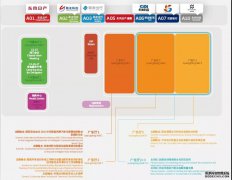精品推荐:湖南省造双旗币一组
精品推荐:湖南省造双旗币一组
民国成立后,铜元仍继续大量流通使用。1914年,铜元正式改称“铜币”,民国发行的铜币与清最大的区别是龙纹被换成了由稻穗组成的嘉禾纹。各省铸造的铜元大多为两面叉的国旗图案,并有“开国纪念币”或“中华民国铜币”字样。1911年12月29 日,经辛亥革命后,已光复的17省代表在南京推选孙中山为中华民国临时大总统。1912年1月3日,中华民国政府宣告成立,清朝灭亡,在中国持续2000 多年的封建君主专制随之结束。民国成立时,由于币制尚未建立,除四川改铸大汉银币,福建改铸中华元宝外,主要的造币厂,大都仍沿用前清钢模铸造银币,以供流通需要。由于币制混乱,临时政府财政部长陈锦涛,于民国元年3月11日呈文大总统孙中山,鼓铸10万元纪念银币以为整顿。
After the founding of the Republic of China, copper yuan continued to circulate in large quantities. In 1914, the copper coin was officially renamed "copper coin". The biggest difference between the copper coin issued by the Republic of China and the Qing Dynasty was that the dragon pattern was replaced by the Jiahe grain composed of rice ears. Most of the copper coins cast in the provinces are flag patterns with two forks and have the words "Founding Commemorative Coin" or "Copper Coin of the Republic of China". On December 29, 1911, after the Revolution of 1911, 17 provincial representatives who had recovered elected Sun Yat-sen as the interim president of the Republic of China in Nanjing. On January 3, 1912, the government of the Republic of China was proclaimed and the Qing Dynasty perished. The feudal monarchy which lasted for more than 2000 years in China ended. At the time of the founding of the Republic of China, because the currency system had not yet been established, besides Sichuan and Fujian, the main coin factories still used the former Qing steel mould to cast silver coins for circulation. Due to currency confusion, Chen Jintao, Minister of Finance of the Interim Government, presented to Sun Yat-sen, President of Wenda, on March 11, the first year of the Republic of China, to coin 100,000 yuan of commemorative silver coins for rectification.
1911年辛亥革命胜利后,清帝退位,中华民国成立。中国民主主义革命的先驱者孙中山就任中华民国临时大总统,并在颁布的“临时大总统令”中提出要“另刊新模,鼓铸纪念币”,随后武昌和南京两处造币厂率先铸行了 “中华民国开国纪念币”铜元辅币,以十文面值的为主,在全国大量发行以取代清朝铜元。这就是“中华民国开国纪念币” 铜元的由来。 无庸置疑,这种铜元的币名很明确,就是“中华民国开国纪念币”。根据钱币收藏界的一般共识,对一种钱币,应该把可以明确币名或显示钱币最主要特征的一面称为“面”,而把其相对的另一面称为“背”,据此我们应该把此币最能区别于前朝铜元,并具有鲜明的划时代革命和进步意义的有“中华民国开国纪念币”(以下简称开国纪念币)字样的一面称为面,而把其对应记值的另一面称为背。此钱币直径:32.8mm,字迹清晰,包浆浑厚,保存完整。是难得一见的珍品,值得广大藏友收藏。
After the victory of 1911 Revolution, Emperor Qing abdicated and the Republic of China was founded. Sun Yat-sen, the pioneer of China's democratic revolution, took office as the interim president of the Republic of China, and in the promulgation of the "interim presidential decree", proposed that "a new model should be published to coin commemorative coins". Then, two mints in Wuchang and Nanjing took the lead in coining the "commemorative coins of the founding of the Republic of China" copper coins, mainly in ten denominations. In order to replace the copper yuan of the Qing Dynasty, a large number of coppers were issued throughout the country. This is the origin of the copper dollar of the commemorative coin of the founding of the Republic of China. Undoubtedly, the name of this copper coin is very clear. It is the commemorative coin of the founding of the Republic of China. According to the general consensus of coin collectors, one side of a coin that can define its name or show its main characteristics should be called "face" and the other side should be called "back". Accordingly, we should distinguish this coin from the copper yuan of the former dynasty, and have a distinct epoch-making revolution and progressive significance.“ The font of the commemorative coin of the founding of the Republic of China (hereinafter referred to as the commemorative coin of the founding of the Republic of China) is called "face", while the other side of its corresponding value is called "back". The coin has a diameter of 32.8mm, clear handwriting, thick pulp and complete preservation. It is a rare treasure and worth collecting by the vast number of Tibetan friends.
精品推荐:四川铜币三年一百文
四川铜币,是晚清和北洋时期四川省地方政权铸造的货币。由于川省银铜矿缺乏,加之辛亥革命以后军阀割据,致使中央政府《币制条例》关于铜币之原料比例、铜币面额的规定没有严格遵守,四川铜币发行量十分巨大,致使物价虚高、影响经济发展。四川铜币,自光绪二十九年(1903年)六月开铸,至民国二十四年(1935年)十一月法币开始流通才逐渐退出流通领域。
Sichuan copper coin was coined by the local regime of Sichuan Province in the late Qing Dynasty and the Beiyang Period. Due to the lack of silver and copper deposits in Sichuan Province and the warlord separatism after the 1911 Revolution, the regulations of the Central Government on the raw material ratio and denomination of copper coins in the Currency Regulations have not been strictly observed. The circulation of copper coins in Sichuan Province is very large, resulting in a virtual high price and affecting economic development. Sichuan copper coins were minted in June, 1903, and then gradually withdrawn from circulation until November, 1935, when the French coins began to circulate in the Republic of China. 民国元年,四川成都造币厂奉四川军政府之命,开模铸造“军政府造四川铜币”(也称“汉”字铜元)。此枚军政府造四川铜币,于民国二年(1913年制)造,正面为"四川铜币"四字,中间有一枚海棠花,有"军政府造",下边为当制钱壹百文,反面中问有一圈,圈内为篆文"汉"字,圈外还环绕有十八个小圈,代表当时十八个省份,十八个圈围绕"汉"字,寓意十八省人民团结起来共同战斗。小圈上有"中华民国二年"六字。该钱币表面包浆浑厚自然,且品相保存极佳,纹饰,字体清晰可见,存世极少且流通时间短,品相达到如此之好的,极为罕得。作为特殊历史时期、地方政权的特殊货币,是历史的产物,具有不可替代的文物价值,是历史的见证。
民国元年,四川成都造币厂奉四川军政府之命,开模铸造“军政府造四川铜币”(也称“汉”字铜元)。此枚军政府造四川铜币,于民国二年(1913年制)造,正面为"四川铜币"四字,中间有一枚海棠花,有"军政府造",下边为当制钱壹百文,反面中问有一圈,圈内为篆文"汉"字,圈外还环绕有十八个小圈,代表当时十八个省份,十八个圈围绕"汉"字,寓意十八省人民团结起来共同战斗。小圈上有"中华民国二年"六字。该钱币表面包浆浑厚自然,且品相保存极佳,纹饰,字体清晰可见,存世极少且流通时间短,品相达到如此之好的,极为罕得。作为特殊历史时期、地方政权的特殊货币,是历史的产物,具有不可替代的文物价值,是历史的见证。
In the first year of the Republic of China, the Chengdu Mint of Sichuan, under the orders of the Sichuan Military Government, cast the "Sichuan Copper coin made by the military government" (also known as the "Han" copper coin). This Sichuan copper coin was made by the military government in 1913. It has four characters of "Sichuan copper coin" on the front, a crabapple flower in the middle, a hundred words of "made by the military government" on the bottom, and a circle on the reverse. The circle is inscribed in seal script "Han" on the inside and eighteen small circles on the outside, representing eighteen provinces at that time. All circles around the word "Han" imply that the people of eighteen provinces unite to fight together. There are six words on the circle: "two years of the Republic of China". The surface of the coin is thick and natural, with excellent preservation, decoration, clear and visible fonts, very few survivors and short circulation time, so good appearance is rare. As a special currency of special historical period and local regime, it is the product of history, has irreplaceable cultural relic value and is the witness of history. 此钱币一面铸有铭文,顶部铸“军政府造”,底部铸字“当制钱一百文”,币中心铸文“四川铜币”,另一面也有精美图文,币上文字书法极为精湛、大气;铜币铸造精美,工艺精湛,雕工极好,浮雕感很强,岁月的痕迹更为其增添了几分沉静和古朴的质感。钱币直径:31.89mm,重:9.25g,也可管窥当时社会文化一斑,质地浑厚有实感,收藏价值附带着特殊的历史意义。
此钱币一面铸有铭文,顶部铸“军政府造”,底部铸字“当制钱一百文”,币中心铸文“四川铜币”,另一面也有精美图文,币上文字书法极为精湛、大气;铜币铸造精美,工艺精湛,雕工极好,浮雕感很强,岁月的痕迹更为其增添了几分沉静和古朴的质感。钱币直径:31.89mm,重:9.25g,也可管窥当时社会文化一斑,质地浑厚有实感,收藏价值附带着特殊的历史意义。
This coin has inscriptions on one side, military government on the top, 100 words on the bottom, Sichuan copper coins on the other, and exquisite pictures on the other. The calligraphy on the coin is exquisite and atmospheric. The coin is exquisite in casting, exquisite in craftsmanship, excellent in sculpture, strong in relief, and even more traces of the years. It adds a sense of quietness and simplicity. Coin diameter: 31.89mm, weight: 9.25g, can also peek at the social culture at that time, the texture is thick and solid, collection value with special historical significance.
- 新闻
- 房产
- 汽车
- 娱乐
- 体育






















